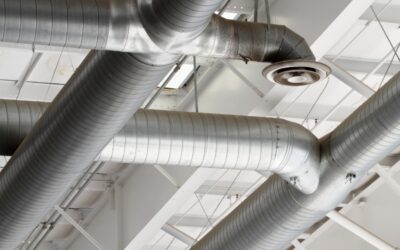Purchasing a new furnace is similar in many ways to a new car purchase. The paint and body should withstand wear; performance is important, especially in inclement weather; a nice warranty gives peace of mind, and fuel efficiency is a key indicator of how much your new machine is going to cost to operate. Take a few moments to learn about annual fuel utilization efficiency, or AFUE, and what it means to you and the energy bills for your Columbus area home, and your system upgrade will go smoothly with no bumps in the road.
Measuring Fuel Efficiency
The annual average fuel efficiency of a combustion appliance, such as furnace, boiler or water heater, is expressed as a percentage of energy input (i.e. gas, oil or propane) converted to energy output (heating for the home, in the case of a furnace or boiler). A higher AFUE percentage means higher fuel efficiency.
If you are replacing a very old gas furnace, for example, it may only deliver 56 to 70 percent AFUE, converting 56 cents of the energy dollar to home heating. In stark contrast, you may select a high-efficiency furnace replacement with 98 percent AFUE, improving efficiency performance by 28 to 42 cents on the energy dollar.
What AFUE Means To You
The U.S. Federal Trade Commission (FTC) requires manufacturers display a home-comfort system’s AFUE on the EnergyGuide label, which makes it easy for consumers to compare the AFUE from one model to the next (the intended purpose of the EnergyGuide program).
However, a detailed analysis, or cost analysis, is beneficial to understand the actual cost of the furnace replacement or new installation for the life of the system. The cost analysis should be performed by a reputable and knowledgeable HVAC contractor. The analysis covers the purchase price (less any rebates or federal tax credits), installation costs, operating costs (AFUE) and estimated maintenance and repairs.
All of these elements are the true cost of a new system, which is why bargain deals aren’t really bargains when you’re left with no heat, no warranty, no maintenance agreement and no recourse.
AFUE and Professional Installation
The annual fuel utilization efficiency, or AFUE, percentage is not a steady-state measurement of fuel efficiency; it is an estimated efficiency percentage based on average operating and environmental conditions. One of the major conditions which is not included in AFUE is the quality of installation performed by the HVAC contractor.
Your furnace replacement will be one component of the forced-air heating system inside your home. The other components are the ductwork, including air ducts, grilles, outlets and other components, the air filter, free airflow through the home and any add-on system, such as a zoning system, whole-house dehumidifier, air-filtration system and UV light system.
Your home’s envelope (heat gain/loss from air leakage and insulation deficiencies) affects comfort, energy efficiency and AFUE in regards to the heating load placed on the furnace. Therefore, unless the furnace installation is performed by a pro, the furnace AFUE percentage and your pocketbook suffer.
Preparing Your Home
The elements of a professional furnace installation include an energy audit of the home, an evaluation of the ductwork, performing efficiency upgrades (sealing and insulating) and measuring the heating load to accurately size the capacity of the new furnace.
Your HVAC contractor should use specialized equipment for the audit, such as a blower door test, to pinpoint air leaks in the home’s shell and the home’s interior. An infrared imaging test identifies insulation deficiencies which may be present and would compromise comfort and the annual fuel utilization efficiency, or AFUE. The other systems in the home are evaluated for efficiency, and details are shared of how you may conserve energy in each area (e.g. electronics, lighting and kitchen appliances).
The duct system can not be ignored. It needs a complete evaluation to determine if it is capable of handling airflow from the new furnace. Ducts are inspected for leaks and loose connections, inadequate insulation for ducts located outside the insulation barrier, layout, registers, grilles and more.
Your contractor should use industry-standard Manual J, from the Air Conditioning Contractors of America (ACCA), to perform a heating load. The heating load of the home is the major factor for determining the size of the new furnace. Simply replacing the old furnace with a new one of the same size is not wise, since the original furnace most likely was not sized using Manual J.
For more information about the annual fuel utilization efficiency, or AFUE, and preparing your Columbus area home for installation, contact Indoor Solutions, Inc.



